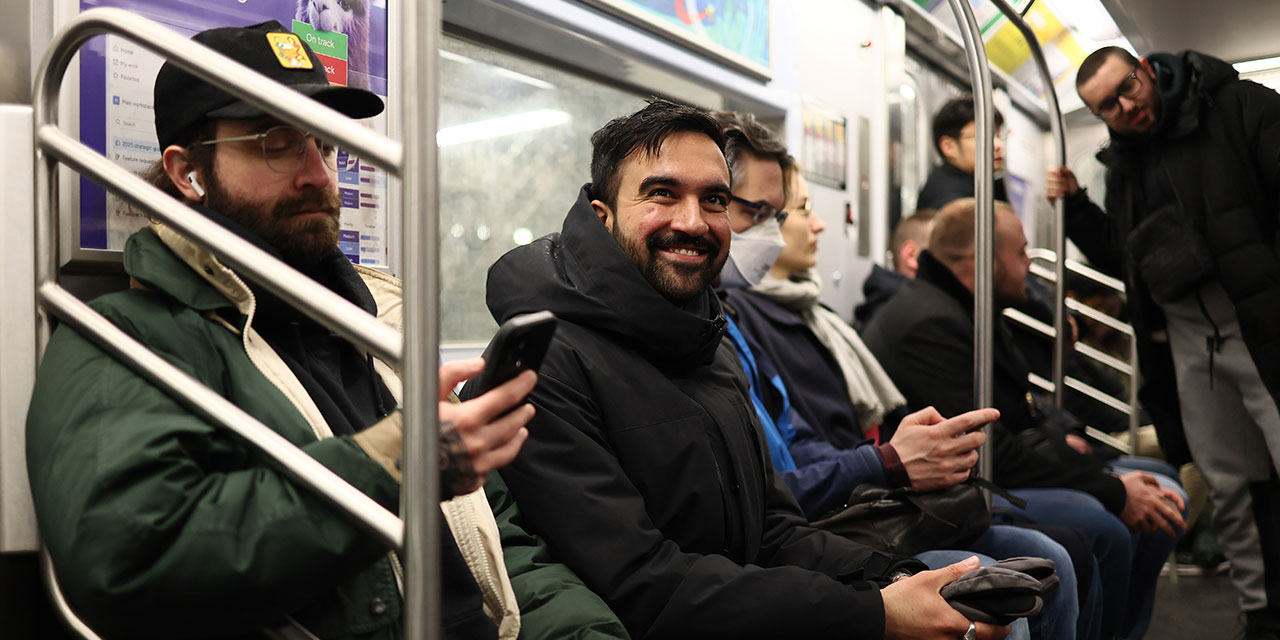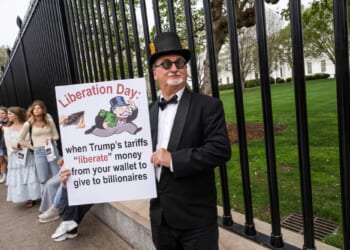
Mayoral candidate Zohran Mamdani recently outlined how he would address New York’s mental-health crisis. He plans to create a “Department of Community Safety,” and deploy mental-health workers rather than police officers in crisis response. “Every New Yorker,” the socialist politician boasted, “will be able to access community-based programs.”
In reality, Mamdani’s Department of Community Safety would throw money at ineffective programs—and shortchange those that reduce homelessness, repeated arrests, and public disorder.
For New Yorkers, this should sound familiar. Former mayor Bill de Blasio’s ThriveNYC initiative also promised “something for everyone” and fewer cops. The result: a $1 billion boondoggle that did nothing to meet the needs of the seriously mentally ill. Mamdani’s proposal is a redux—and could be even worse.
Finally, a reason to check your email.
Sign up for our free newsletter today.
Mamdani wants to prioritize feel-good wellness efforts like “peer-led programs,” “coping skills training,” and anti-stigma campaigns. That comes at the expense of targeted programs for intervention in cases like that of Ramon Rivera, a mentally ill man who stabbed three innocent New Yorkers to death in November 2024.
To prevent such tragedies, the city must focus its mental-health spending on the 5 percent of New Yorkers with severe illnesses like schizophrenia and bipolar. One proven approach is expanding Kendra’s Law, a state program that allows courts to mandate outpatient treatment for a small number of seriously mentally ill individuals with histories of hospitalization or violence. The program has been shown to reduce homelessness, violence, and arrests. Yet Mamdani’s proposal doesn’t even mention it.
That’s a problem, because when the seriously mentally ill go untreated—as at least one third of those in New York do—everyone is less safe. Mayor Eric Adams and his mental-health staff understand this, which is why they’ve pleaded with Albany for more inpatient psychiatric beds and broader involuntary treatment standards. But those solutions, key to stoppering the cycle of “treating and streeting” the mentally ill, are ultimately the state’s responsibility.
Mamdani wants law enforcement to respond to fewer crisis calls and says that the NYPD is “not equipped” to handle mental-health emergencies. He’s wrong. In 2023, officers responded to nearly 175,000 emotionally disturbed person calls. They used force in less than 1 percent of those encounters. The NYPD has years of experience successfully responding to crisis calls. “Some research,” my Manhattan Institute colleague Stephen Eide notes, “suggests that over 90 percent of patrol officers have had encounters with mentally ill people. . . . What percentage of ‘mental-health professionals’ has substantial experience with people with untreated psychosis and violent tendencies?”
Law enforcement alone is equipped to intervene when someone is violent or self-harming. Subway assaults on police have surged post-pandemic and, as Vital City reported earlier this year, among “the top 10% of people arrested for violent subway crimes, almost 80% had mental health issues.” That’s why it’s silly to suggest, as Mamdani does, that mental-health and social workers, alongside “peer counselor[s],” be sent into such fraught situations. At the very least, Mamdani should ask these unarmed responders if they want to proceed without police backup: more than 1,700 emotionally disturbed persons “used force” against NYPD cops in 2023.
The NYPD’s interactions with the mentally ill are, in the vast majority of cases, safe and effective. Any serious mayoral candidate would commit to preserving this essential part of the city’s crisis-response system. Mamdani would scrap it. New Yorkers don’t want a reboot of de Blasio-era failures—they want real treatment for the seriously disturbed. Mamdani’s plan would take the city backward, to the detriment of both the mentally ill and the public at large.
Photo by Michael M. Santiago/Getty Images News via Getty Images
City Journal is a publication of the Manhattan Institute for Policy Research (MI), a leading free-market think tank. Are you interested in supporting the magazine? As a 501(c)(3) nonprofit, donations in support of MI and City Journal are fully tax-deductible as provided by law (EIN #13-2912529).
Source link


















